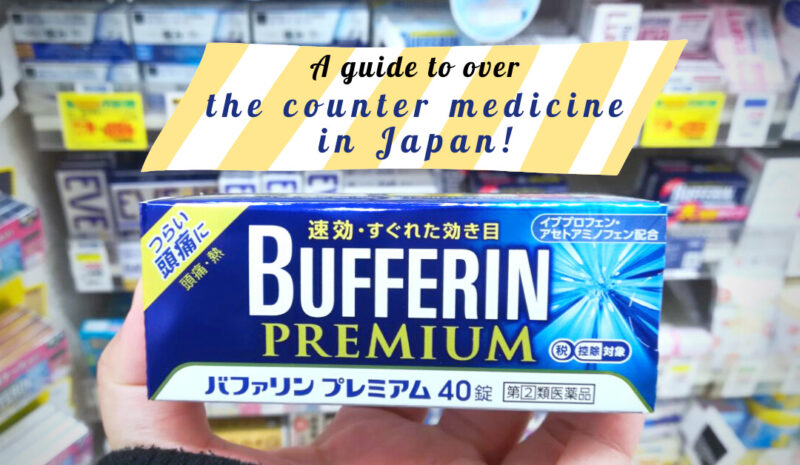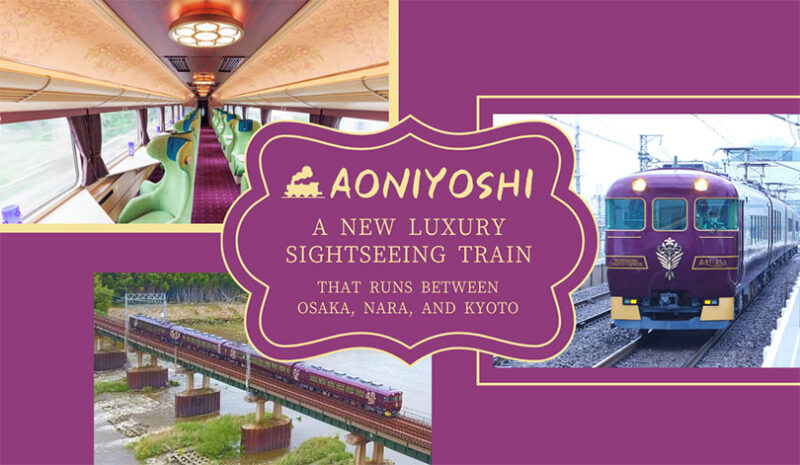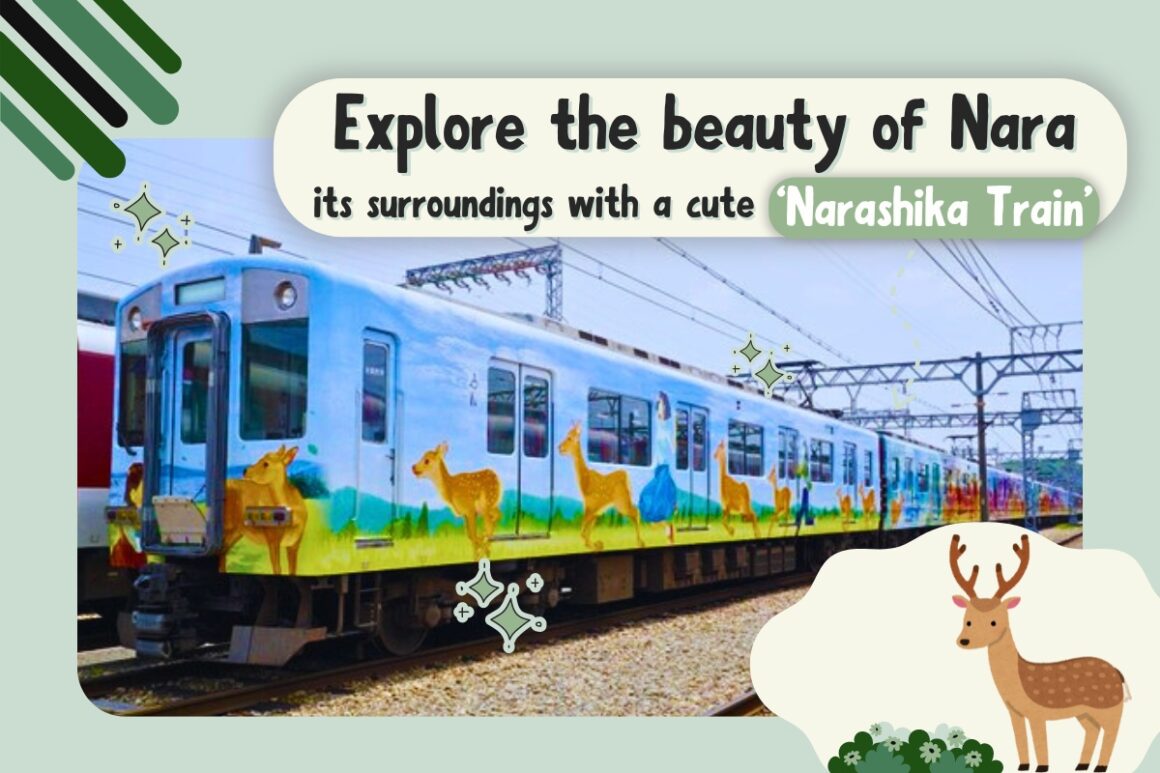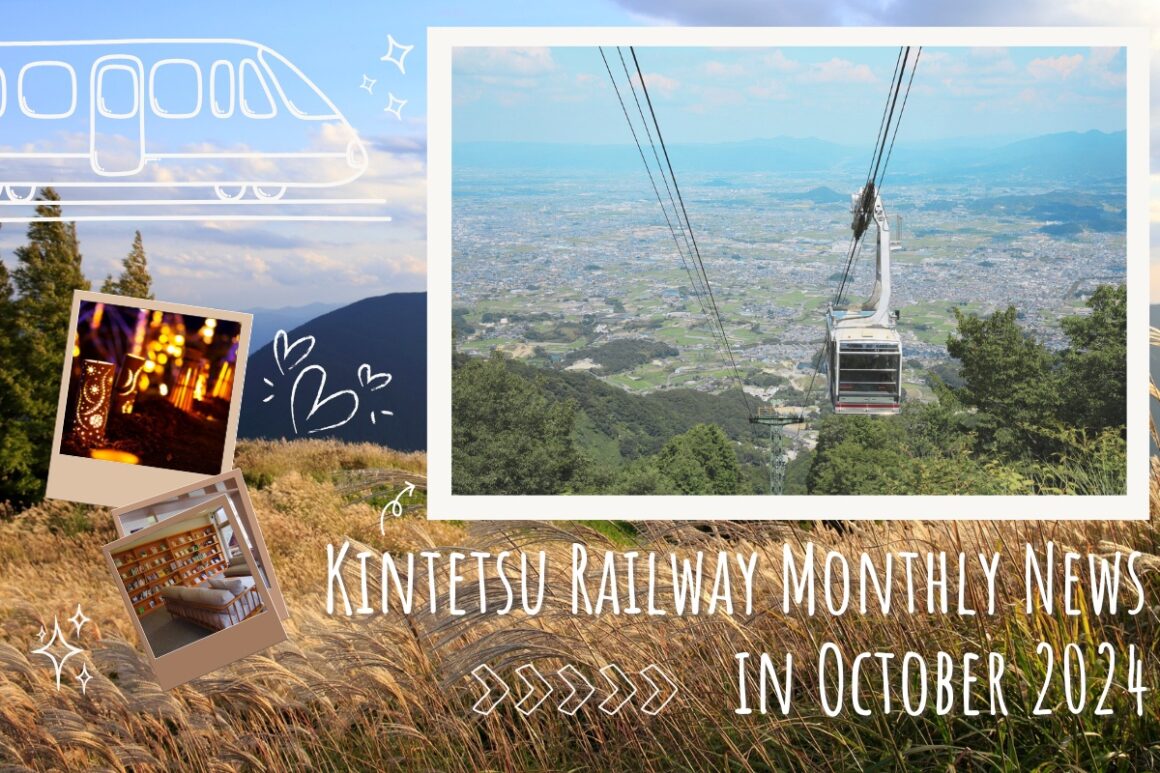The Shrines and Temples of Amino town in Kyoto
Jun 03, 2020
Japan as a lot of shrines and temples dotted around towns and hillsides.
They range from large grounds, where events can be held, to small huts, which you might not even give a second look, and everything in between.
The Difference Between Shrines and Temples
Historically, the two major religions in Japan have been Shinto, the native religion, and Buddhism, imported from India via China and Korea.
Shrines belong to the Shinto religion, a polytheistic faith, so there are lots of gods to go around. Whereas temples belong to Buddhism, of which there are several variations resulting in subtle differences.
They all have beautiful works of art and architecture within them. Typically they are open to the public walking in and taking pictures, and even saying a prayer if you are so inclined. However, the styles, and what they highlight, are very different.
A lot of shrines are placed at the top of hills so that the residing god can look out over the surrounding area. The temples tend to be located closer to where people live, and slightly more accessible. However, this is by no means a hard and fast rule.
As I’m not an expert on either Shinto or Buddhism I think I’ll leave it there and let the pictures speak for themselves.
The Shrines Index
①Shifuhi Shrine
②Kibune Shrine
③Shizuka Shrine
④The Small One
⑤Amino Shrine
⑥Koori Shrine
⑦Hayao Shrine
⑧Atago Shrine
⑨Tatewaki Shrine
⑩Ichikishima Shrine
⑪Amino Shrine grounds
⑫Hiyoshi Shrine
The Sea Side Shrine – Shifuhi Shrine
Based in Yuhigaura this shrine is at the most North-Eastern end of Hamazume beach up a steep hill. When you’re at the top you can catch glimpses of the sea between the trees. It’s far enough away from the town that all you can hear are the birds and waves gently lapping at the rocks below.
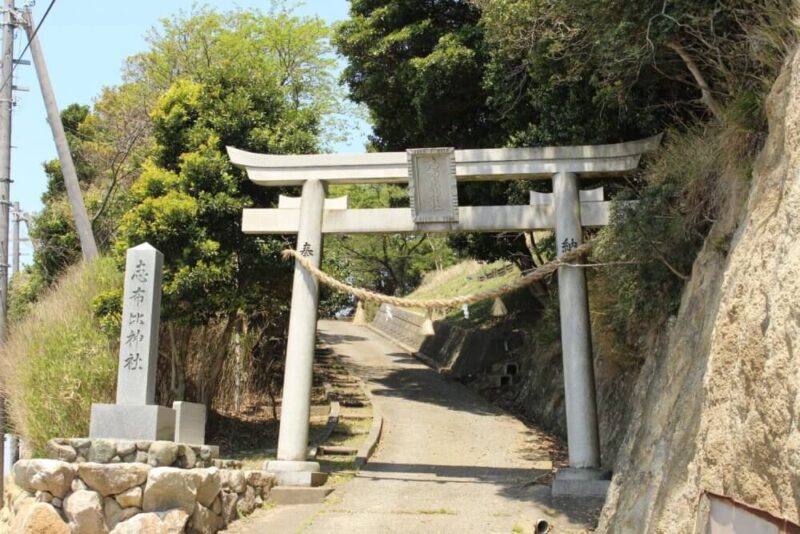
The torii gate from the road
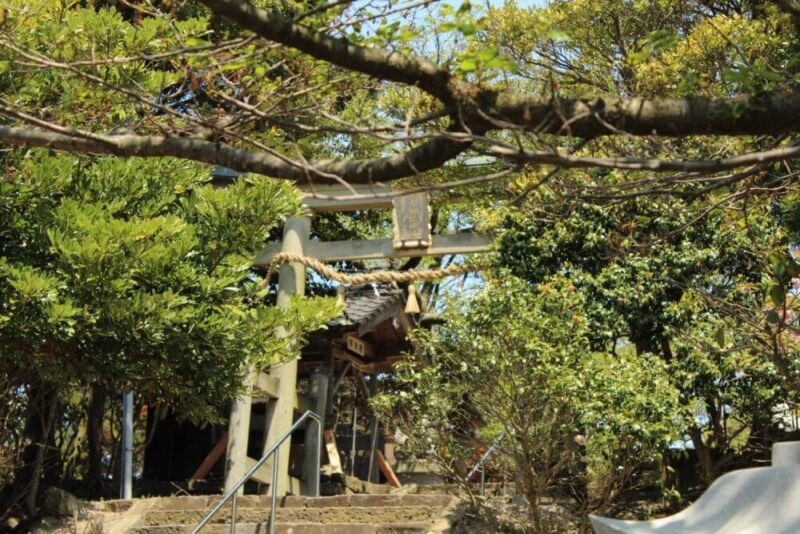
The second torii gate
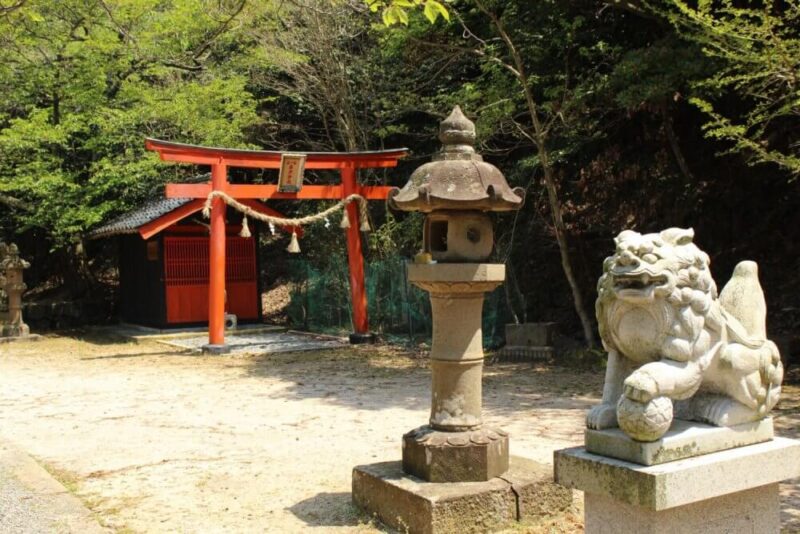
Komainu (guardian dog) with the shrine and painted torii gate
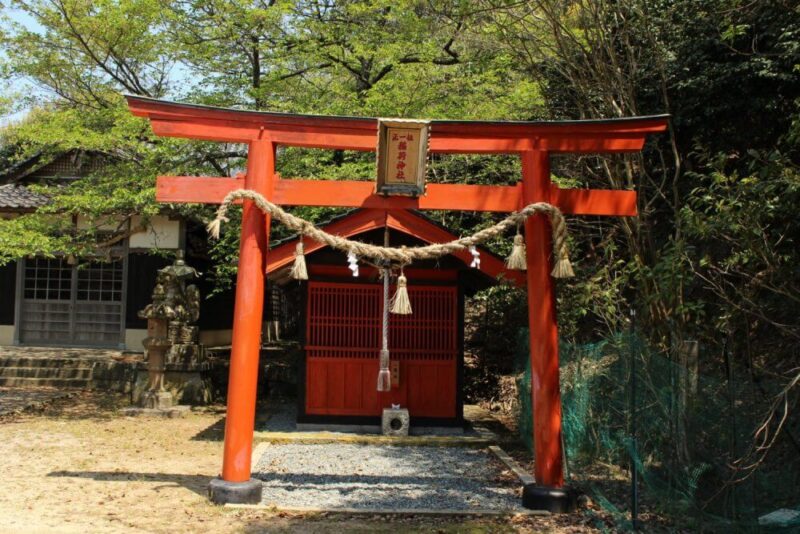
Close-up of the torii and shrine

The view outwards from the second torii gate
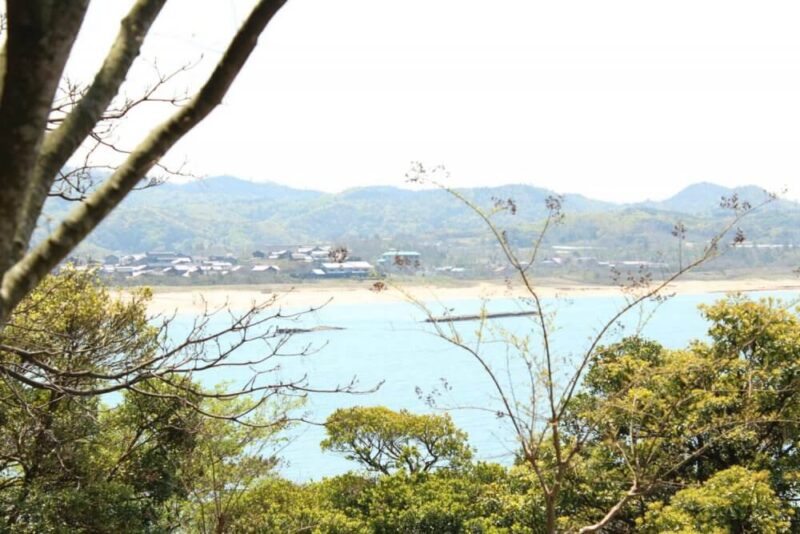
Halfway down the hill the view of Hamazume beach opens up
On a Hill by a River – Kibune Shrine
This shrine has the longest set of stairs of any in Amino.
It’s said that the god which lives here is connected to rivers, and there is a small river at the bottom of the stairs. The main shrine is surrounded by trees, so you quickly forget how close it is to the main road.
There is another Kibune shrine in Kyoto, its pronounced Kifune their.
It’s fairly common to have several related shrines located across the country.
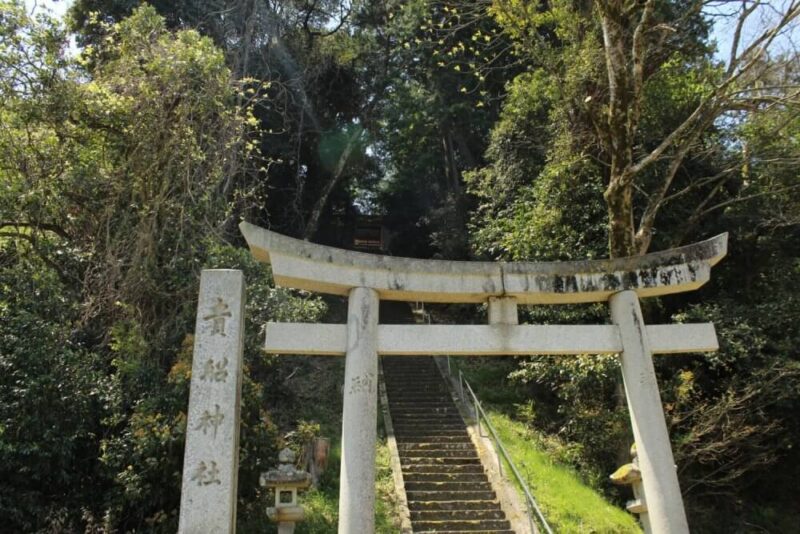
The torii gate with a glimpse of the stairs

A long flight of stairs
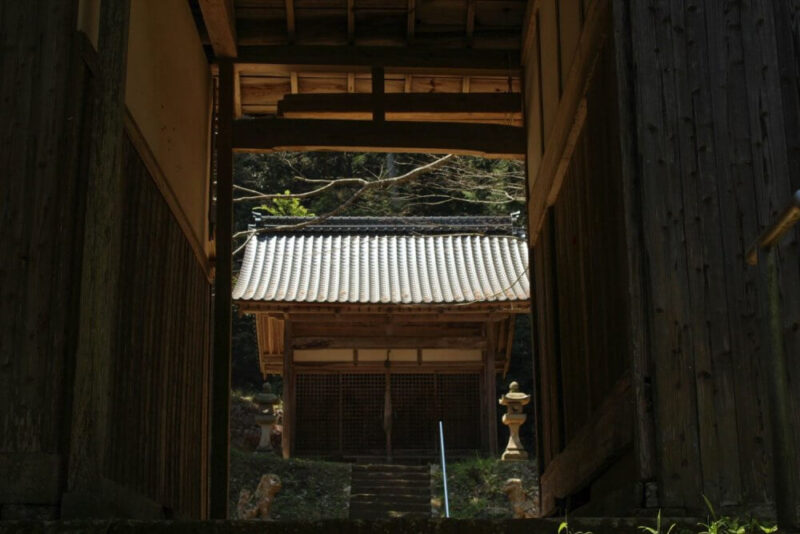
The shrine becomes visible once you are at the top of the stairs
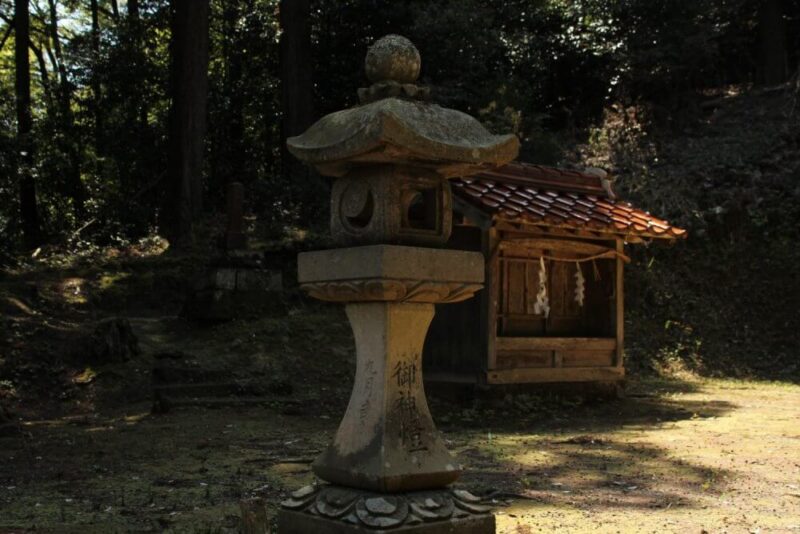
A small shrine off to one side

Inside the main shrine the intricate carvings become visible

The panels on the back depict Chinese legends
One of the Seven Princesses – Shizuka Shrine
Named after Shizuka Gozen, one of Kyotango’s seven princess, this shrine is perched on the hilltop overlooking the sea near the village where she was born.
It’s on the coast road from Amino to Yuhigaura, and while it doesn’t get much traffic, it is worth a drive. There are some beautiful views.
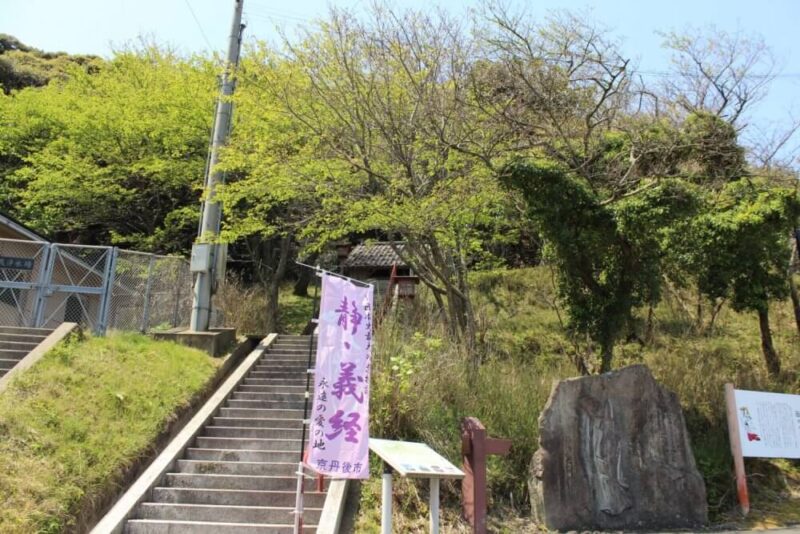
The view from the road
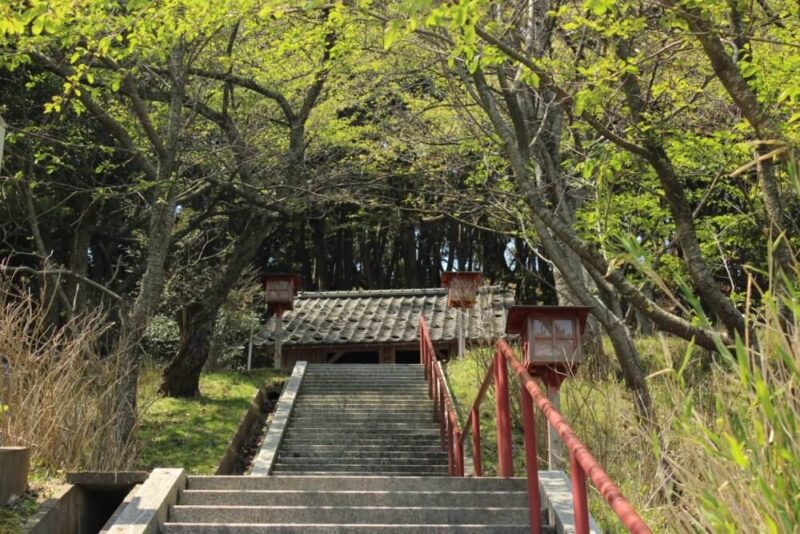
Looking up the stairs you can catch a glimpse of the shrine’s building
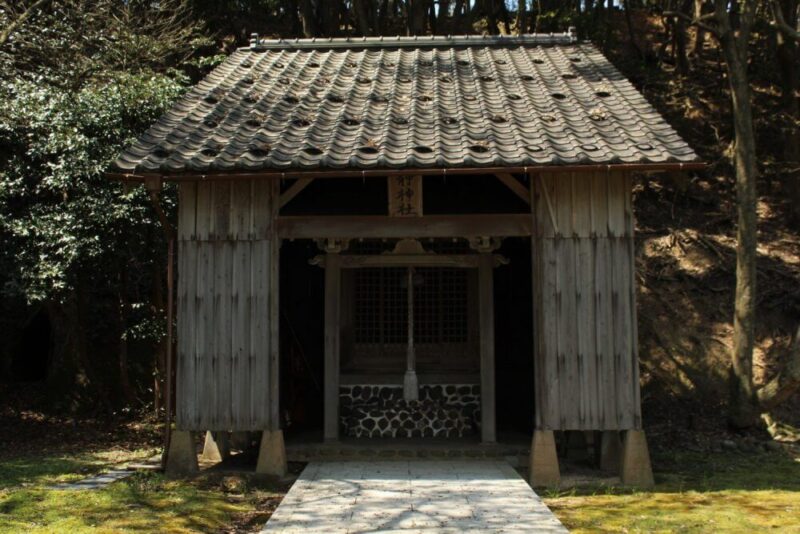
The shine is housed in a larger building to protect it from the harsh weather
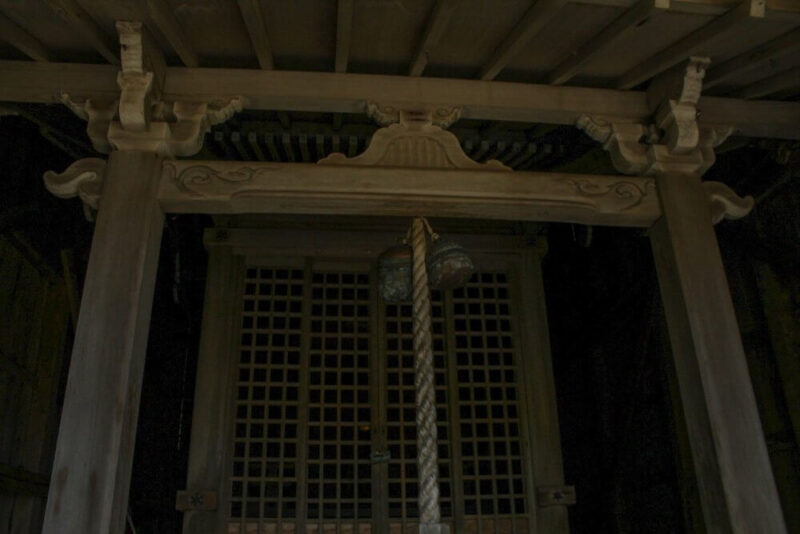
Close-up of the shrine
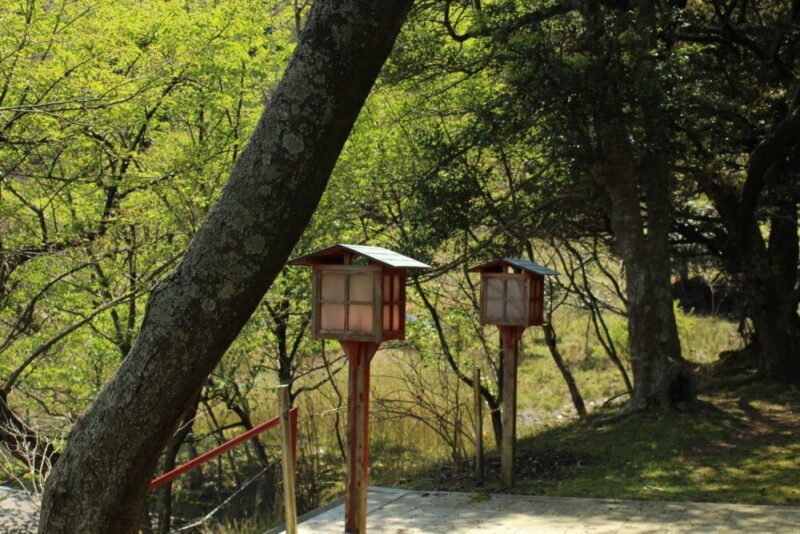
Lanterns light the way up the stairs to the shrine

The view along the coast from the shrine
The Small One
I promised a small shrine at the top of this article, and there are shrines even smaller than this one.
This shrine was hiding behind Fukujyu-in Temple. I don’t know what it’s called, but someone must service it as the shrine was in good condition despite the overgrown path.

A series of torii gates showing the way up the hill
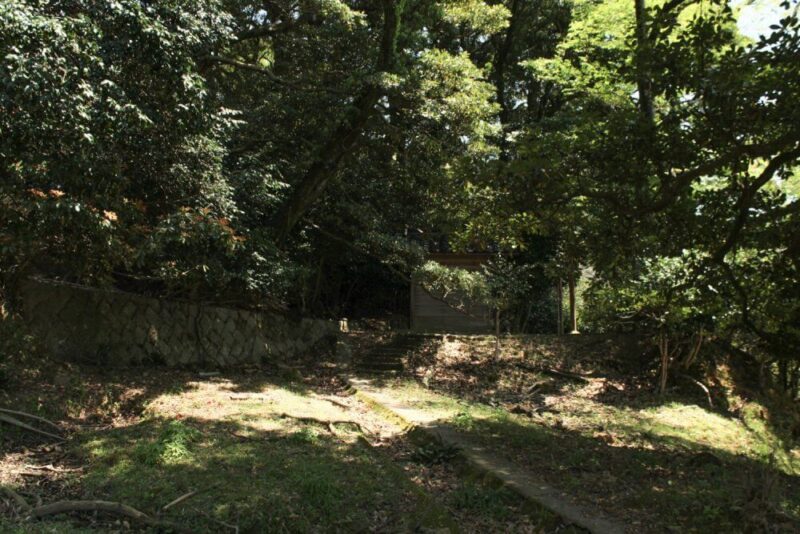
The shrine becomes visible from the top
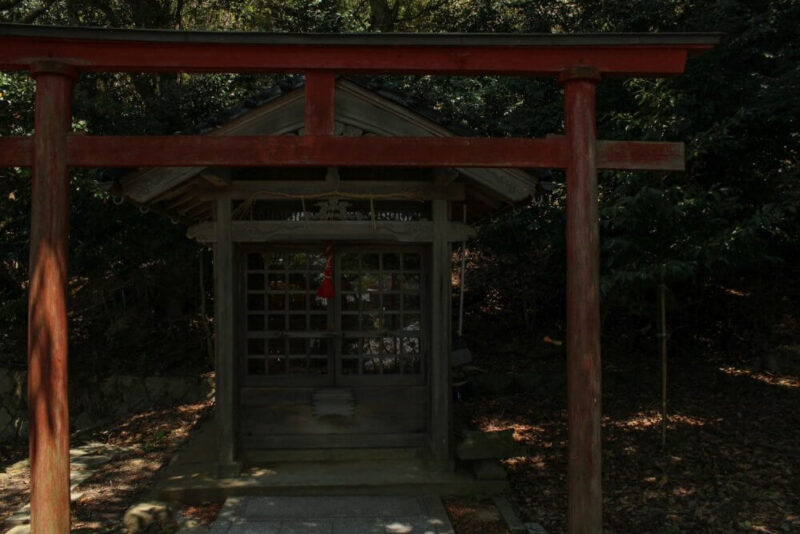
Close-up of the final torii gate
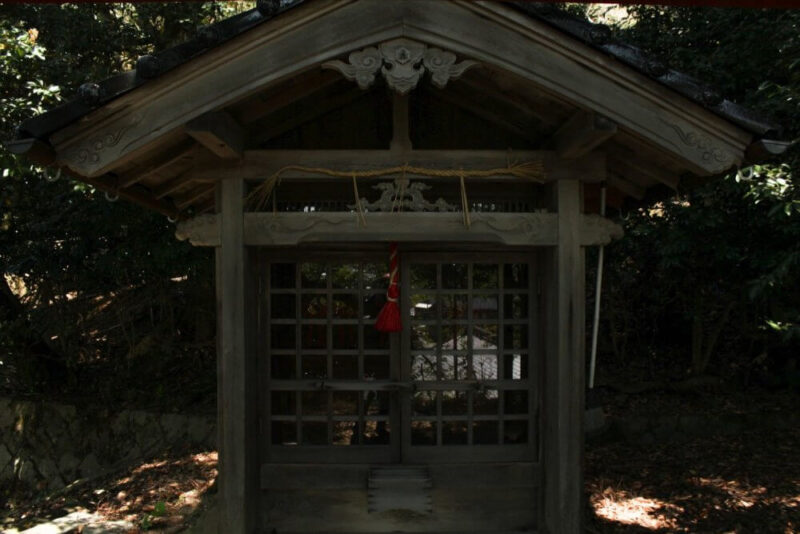
Close-up of the shrine
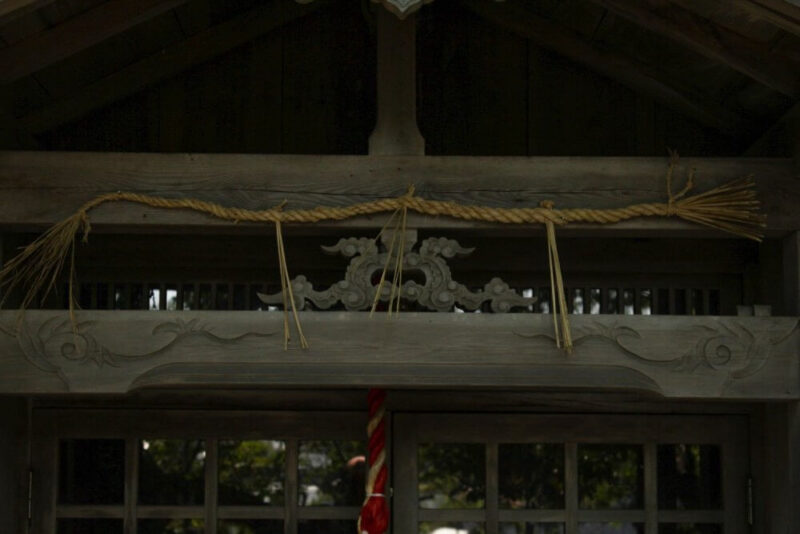
Even small shrines have detailed work

The view back down the hill
Amino Shrine
Amino Shrine (Japanese language only) actually consists of six smaller shrines, with as many as four gods enshrined in each. There are historic documents showing that Amino Shrine existed as early as 927 CE, with the potential that it’s even older than that.
Needless to say it has had extensive maintenance completed on it several times over the last 1100 years.
The main shrine is visible straight from the entrance, and there are some komainu (guardian dogs) visible on either side.
There are three gods enshrined here including Urashimako-no-Kami from the local version of the Urashima Taro legend.

Close-up of a komainu
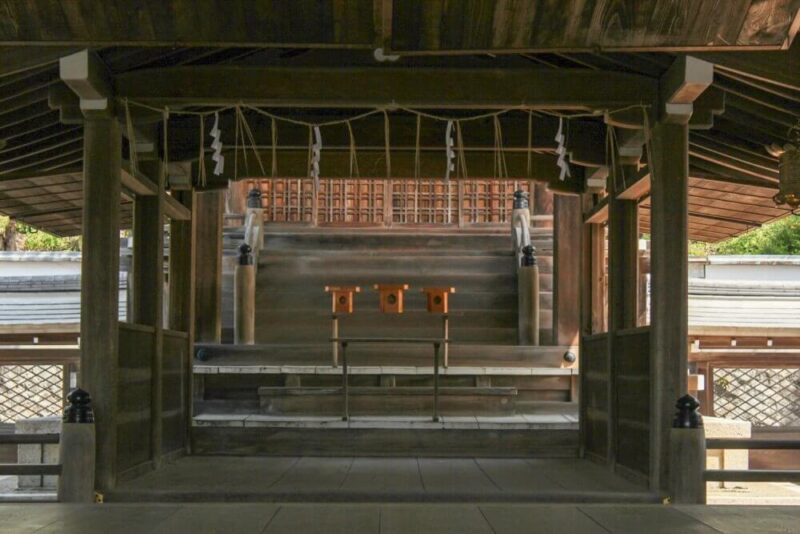
Looking deep into Amino Shrine
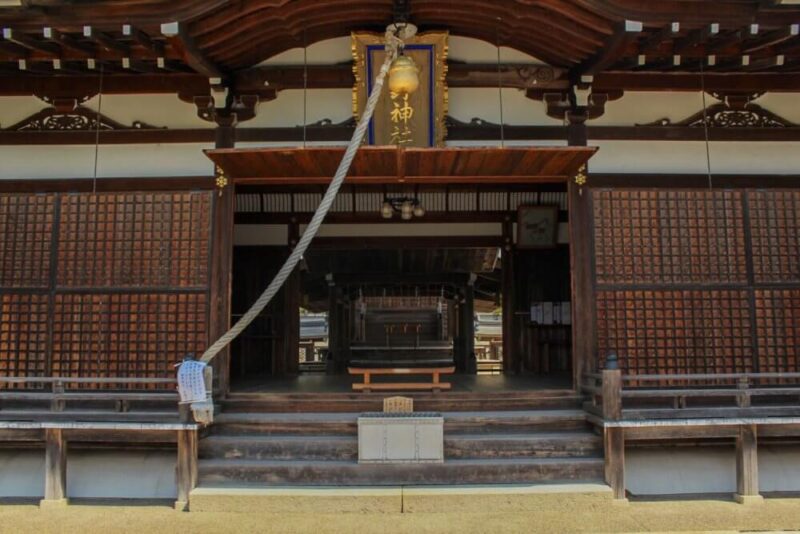
The rope has been moved to one side to reduce the spread of coronavirus
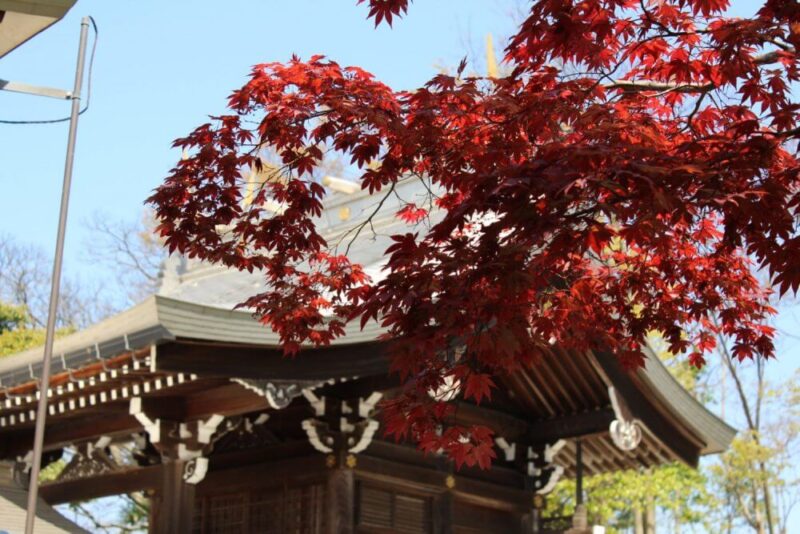
The Japanese maples really accent the shrine
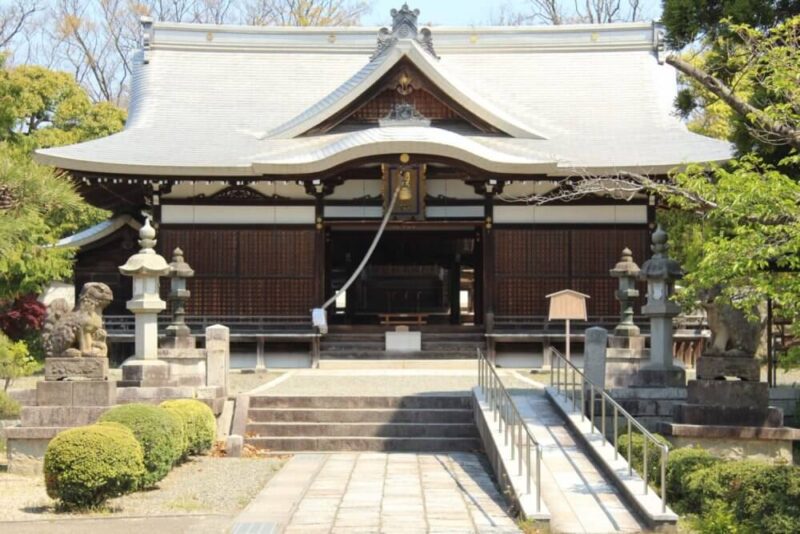
Wide view of Amino Shrine
Koori Shrine
There is some beautiful carving work on Koori shrine which is well worth a look. It houses four gods, including Amaterasu-Okami, who is one of the most important in the Shinto religion.
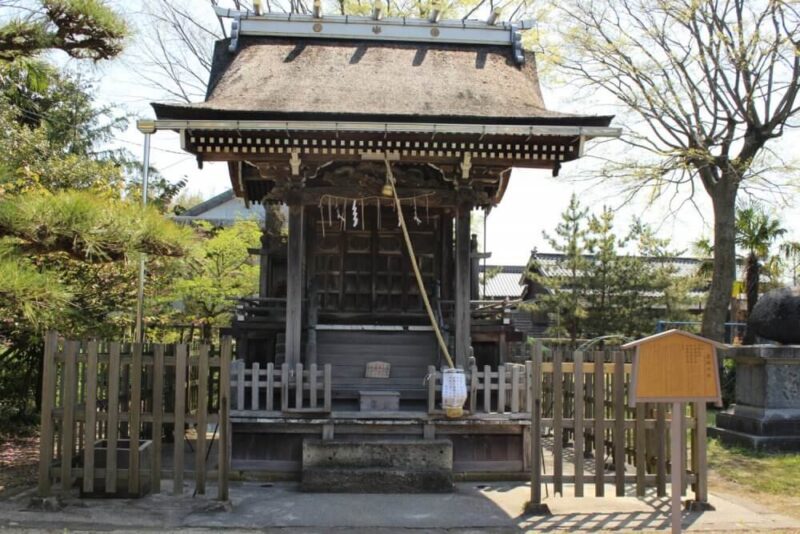
Koori Shrine
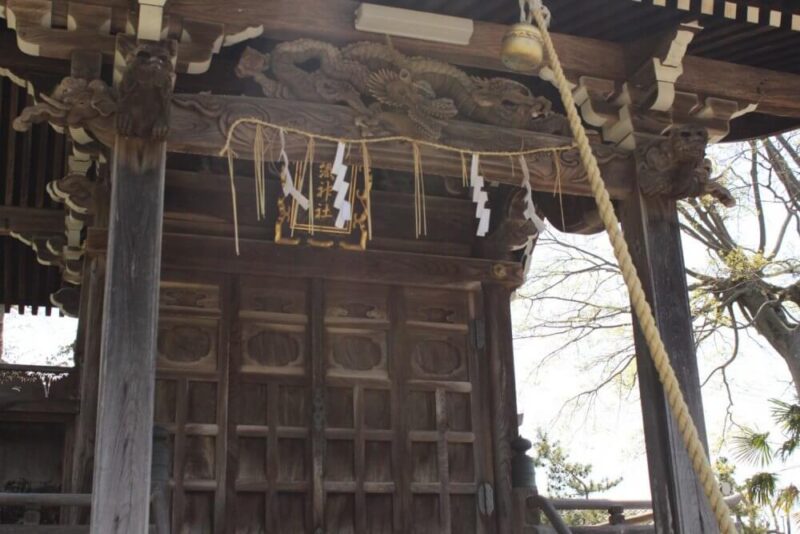
Closer look at the shrine
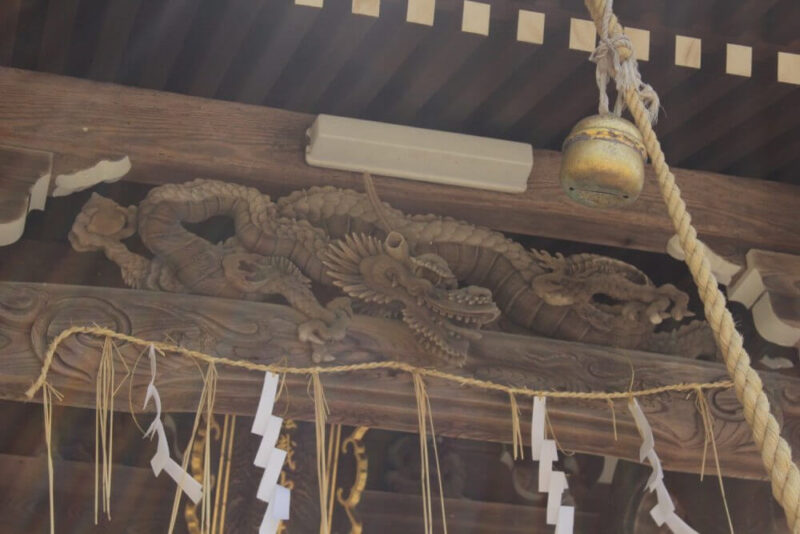
Close-up of the carved dragon
Hayao Shrine
Off to the side of the main shrine is the Hayao Shrine. It only houses one god, but it is said to help people recover from illness. It has been worshiped for a long time.
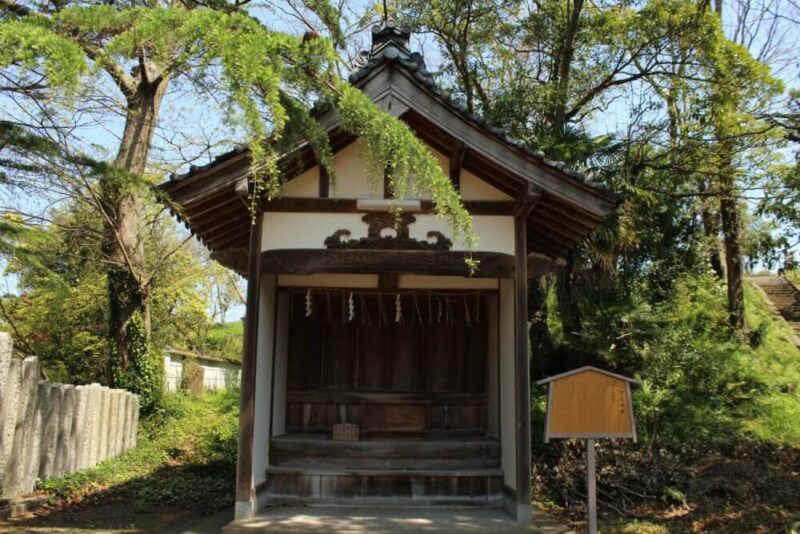
Hayao Shrine
Atago Shrine
At the top of the hill at the back of the Amino Shrine grounds is Atago Shrine.
The only god enshrined here is said to protect against fires. Fires have always been a big problem in Japan.
With the houses built out of wood and so close to one another an accident could leave a lot of people homeless, or worse.
That’s why the shrine is placed so high up, so the god can look out over and protect the entire town.
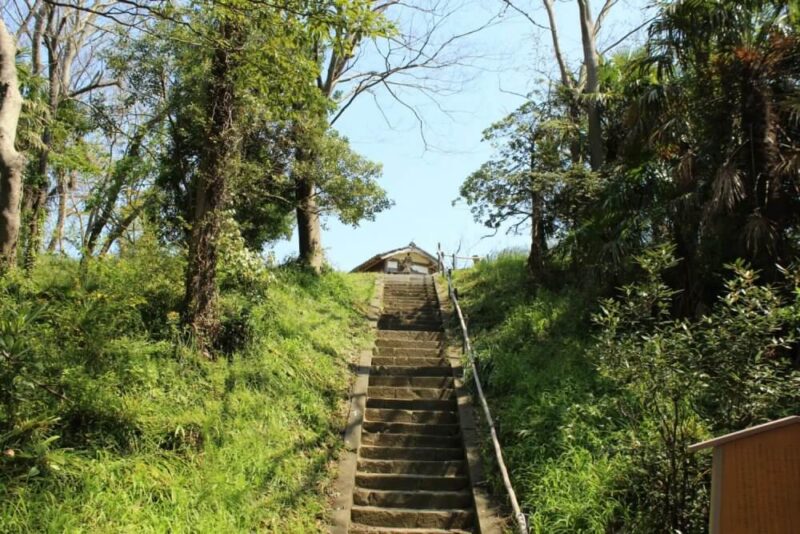
Steps leading up to Atago Shrine
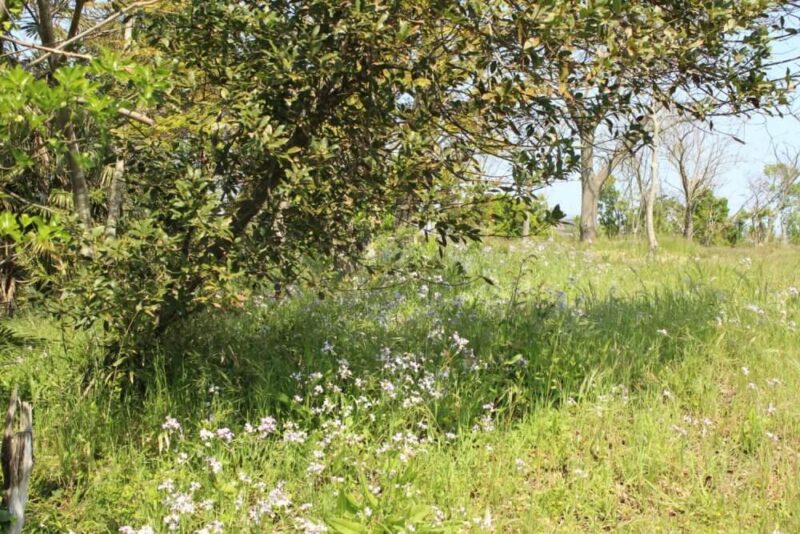
A field of wildflowers on the top of the hill
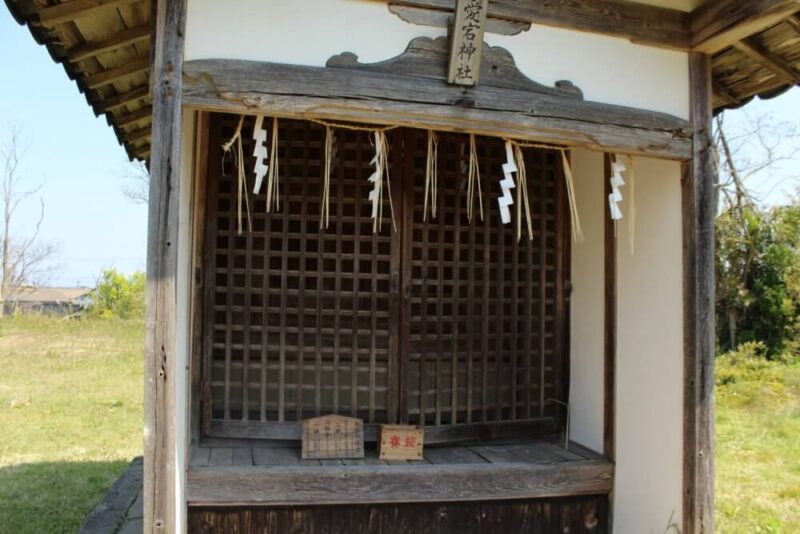
Close-up of Atago Shrine
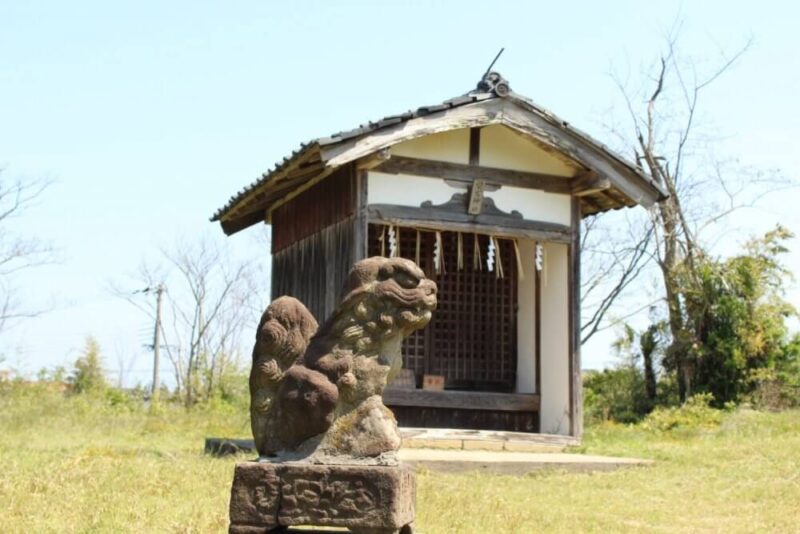
The shrine with its komainu
Tatewaki Shrine
There are four gods living in Tatewaki Shrine. Three of them are related to food, particularly grains and rice, and the fourth is for fire safety. I did say it was important.
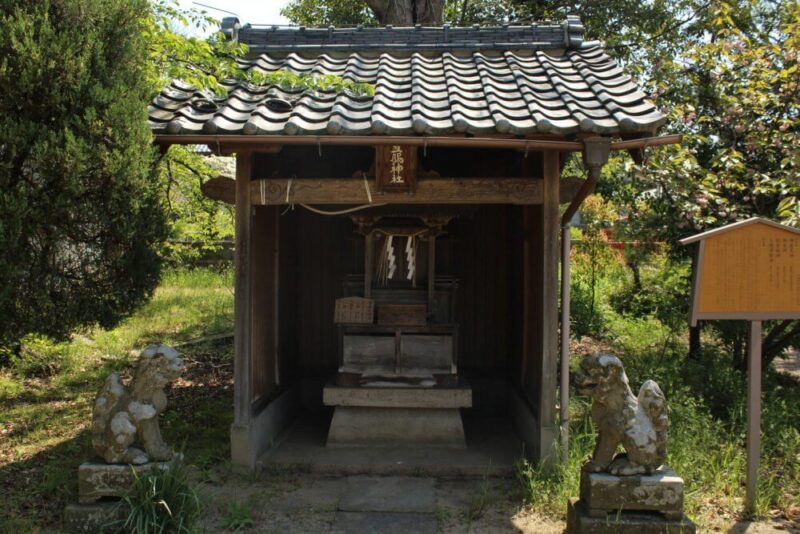
Tatewaki Shrine
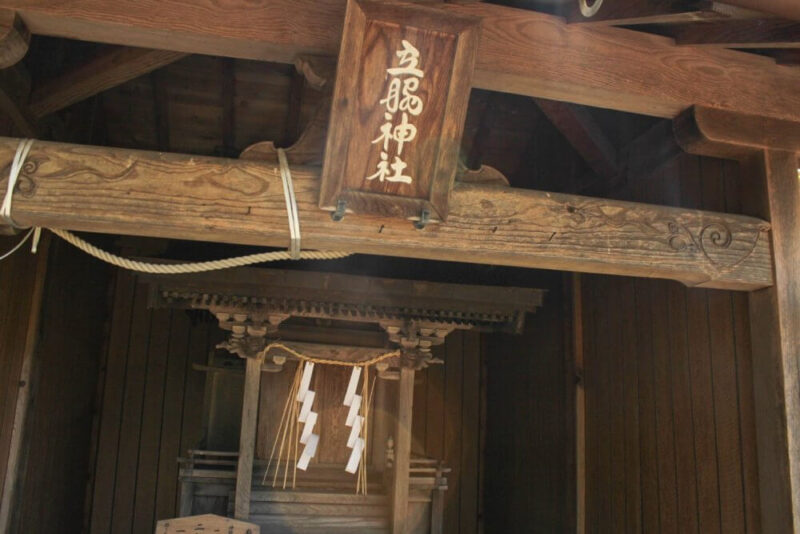
Close-up of Tatewaki Shrine
Ichikishima Shrine
This shrine is placed on a little island in a small pond full of tortoises.
The goddess here along with two others, is said to have been the goddess of water.
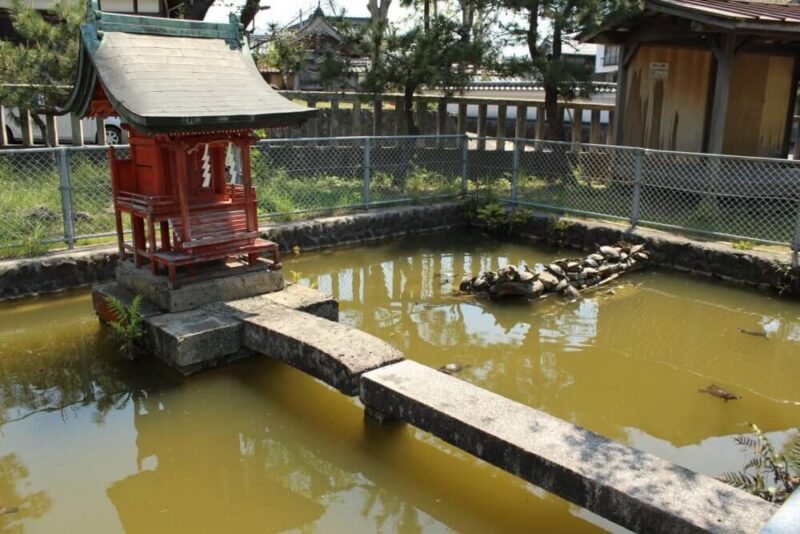
Ichikishima Shrine in it’s pond
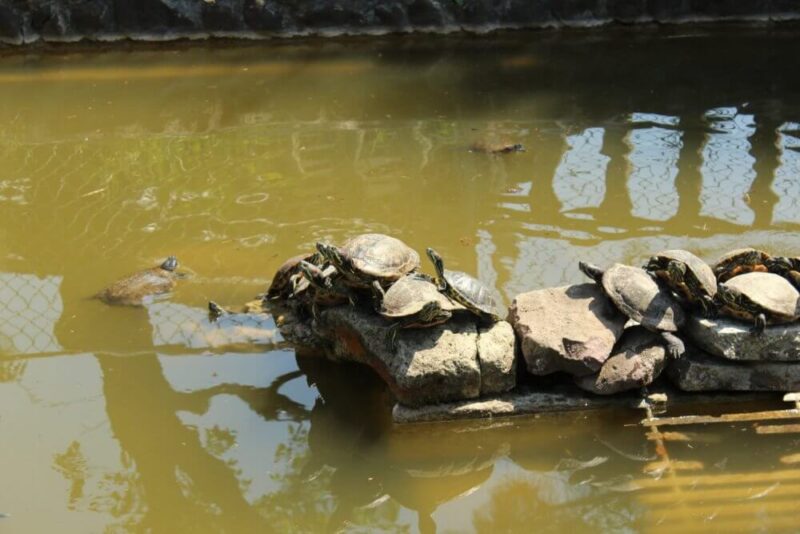
So many tortoises

Close-up of the Shrine
Amino Shrine grounds
There is a lot to see on the grounds of Amino Shrine too.
Including some interesting sculptures, a frame to hang your dreams, wishes or aspirations on, and even a children’s playground.
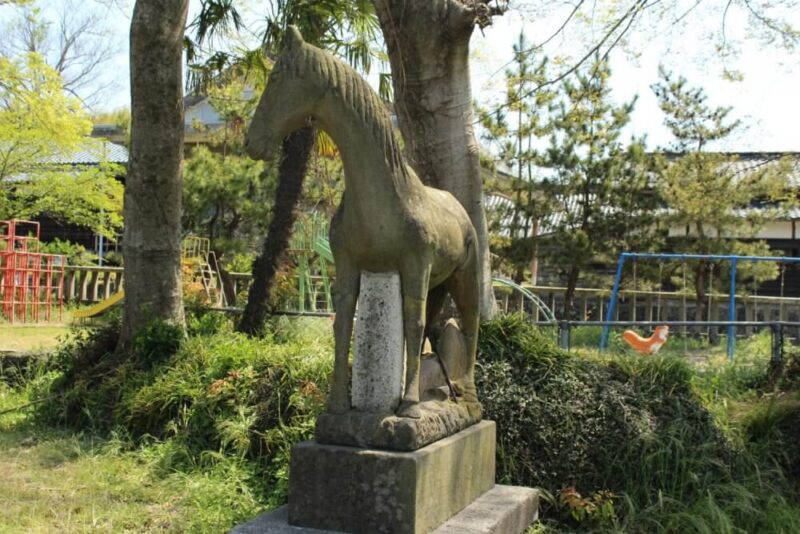
Horse sculpture
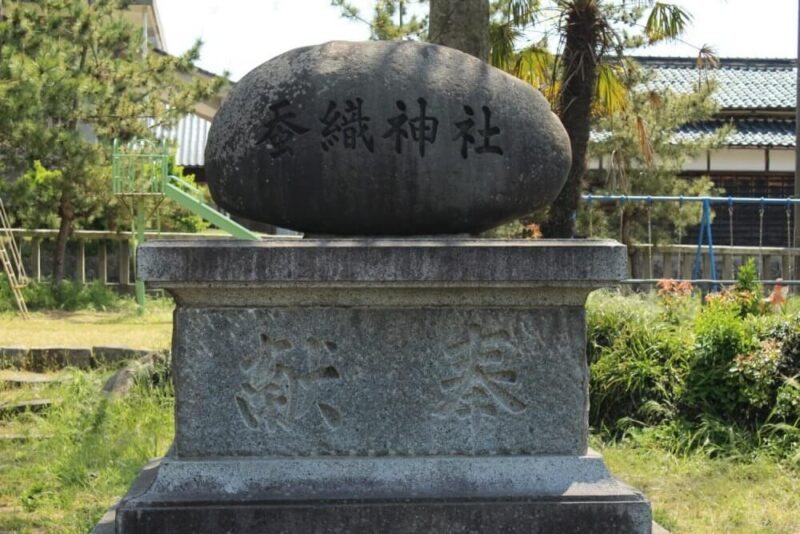
Rock sculpture
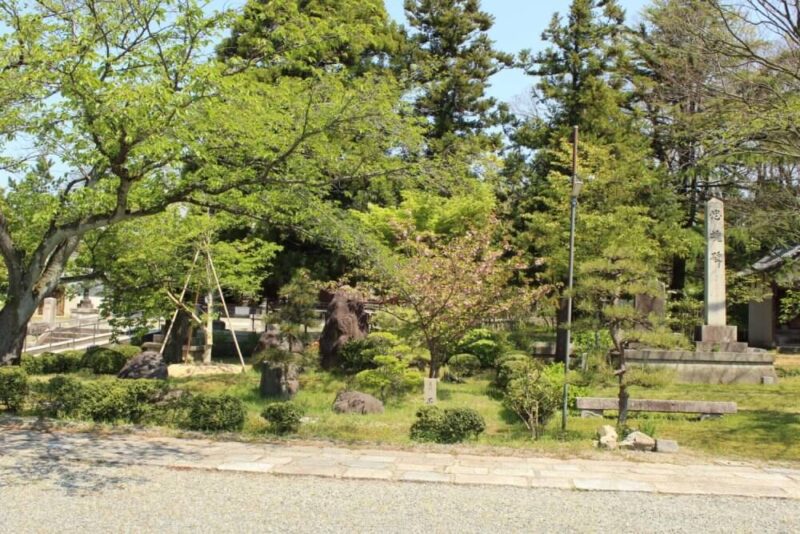
There are many pretty flowers in the shrine grounds
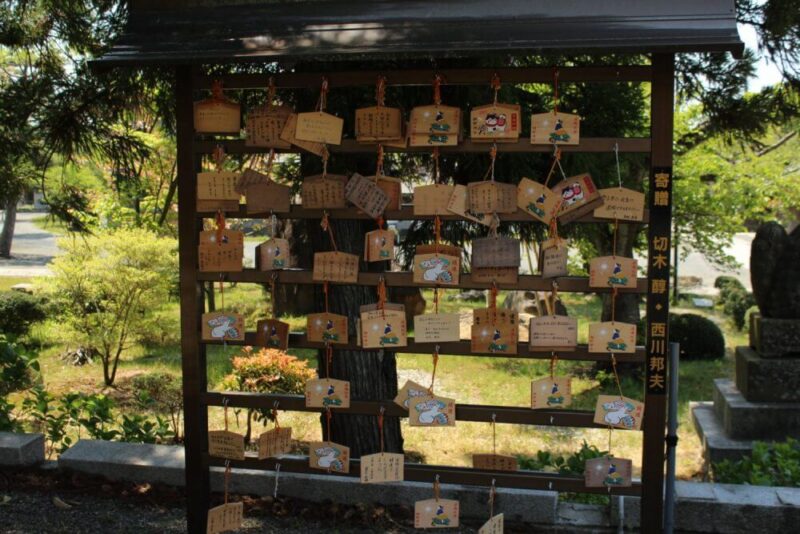
A frame for posting your wishes
Hiyoshi Shrine
Continuing to look at Amino’s shrines and temples we come to Hiyoshi Shrine. It’s located next to the Fukuda river, very near the fishing port at Asamogawa, so you can hear a lot of sea birds while taking in the sites.
Hiyoshi Shrine is split across two levels. The first level has a lot of smaller shrines all sharing the same roof, as well as one shrine with some of the most intricate woodworking I’ve ever seen.
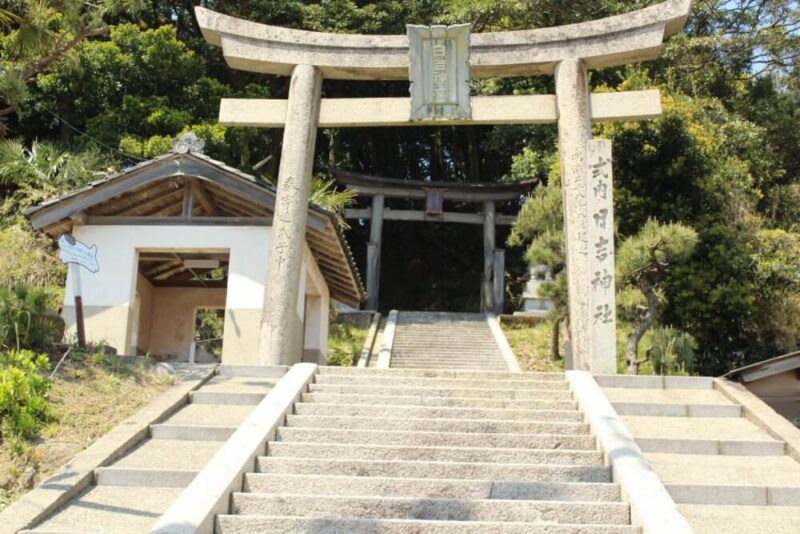
The main torii gate
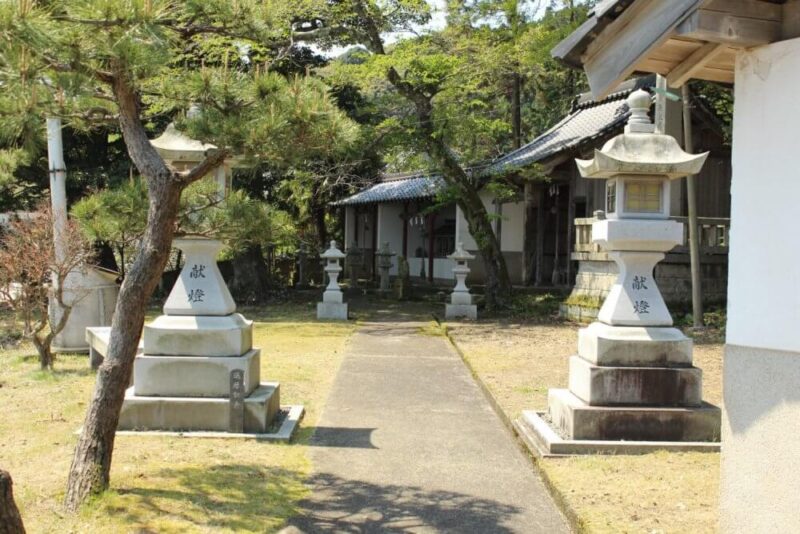
Looking down the first level of Hiyoshi Shrine
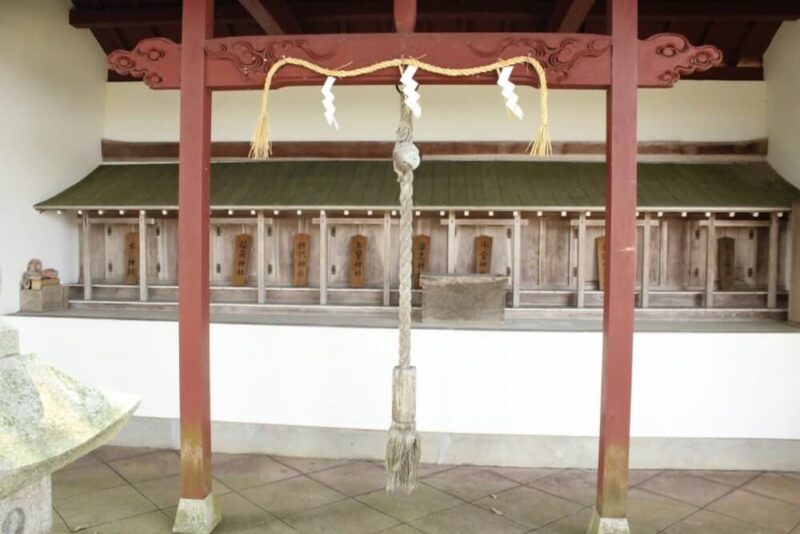
Each of slot is a separate shrine
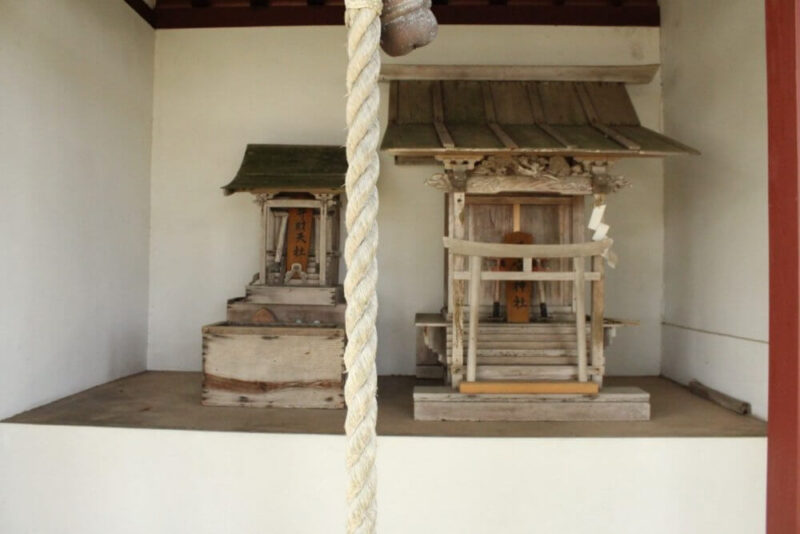
Two small shrines sharing a roof
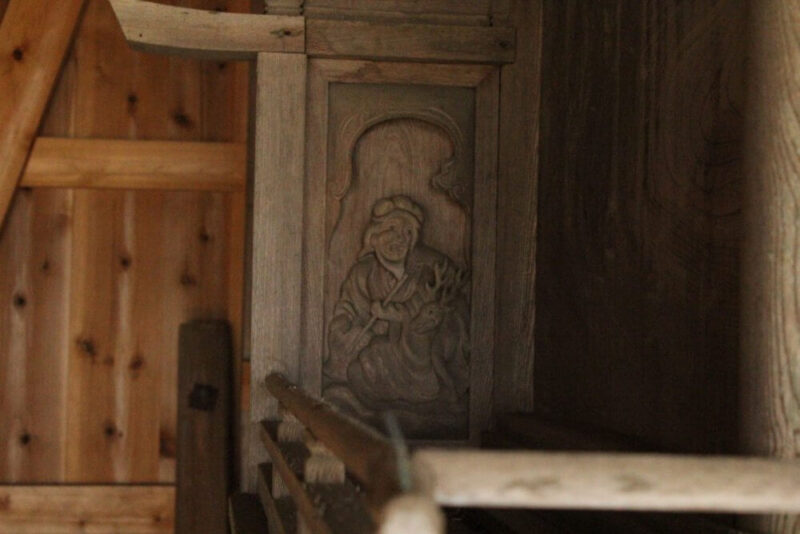
These panels tell ancient Chinese legends
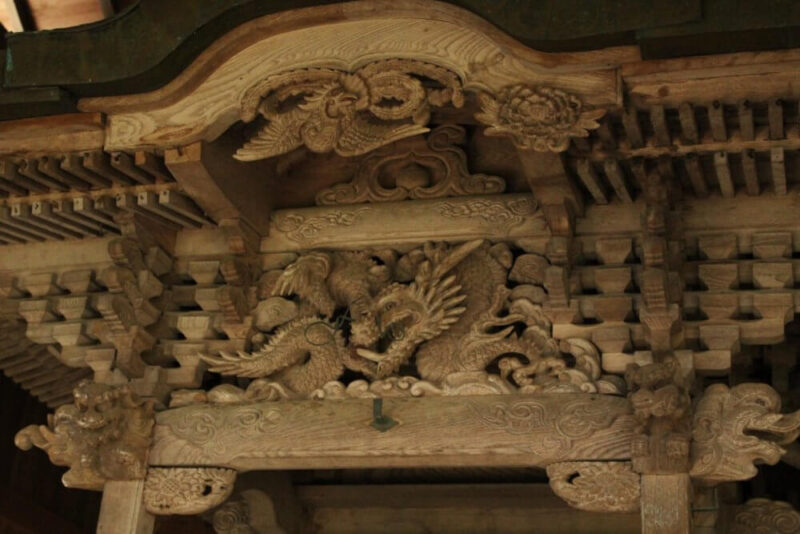
Some very intricate wood carving
The second level has some larger shrines as well as some animal statues.
It also continues the trend of intricate wood carvings. The main god of Hiyoshi shrine uses monkeys to do its work, hence the large monkey statue.
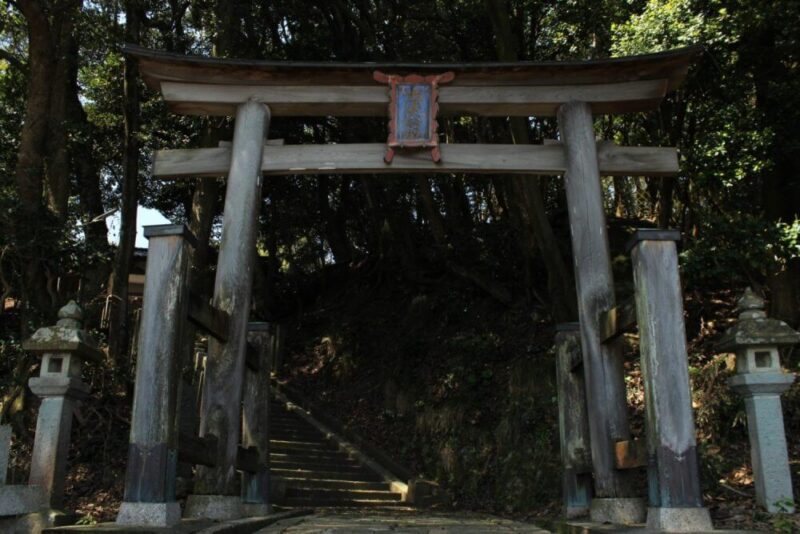
Wooden torii gates are becoming more rare to find
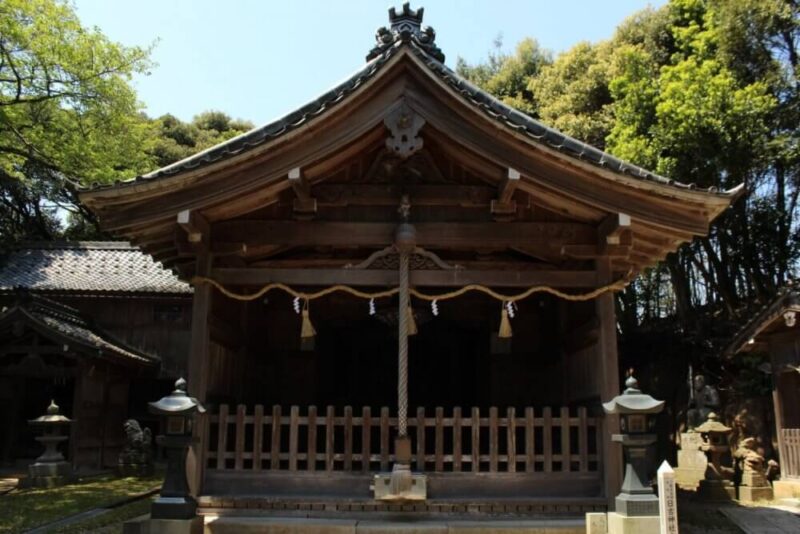
The main shrine of Hiyoshi Shrine

The second shrine
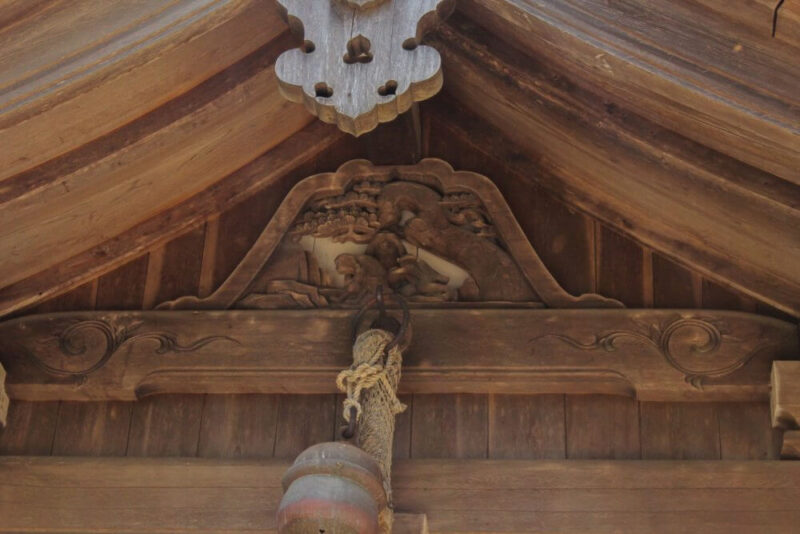
See no evil, hear no evil, speak no evil
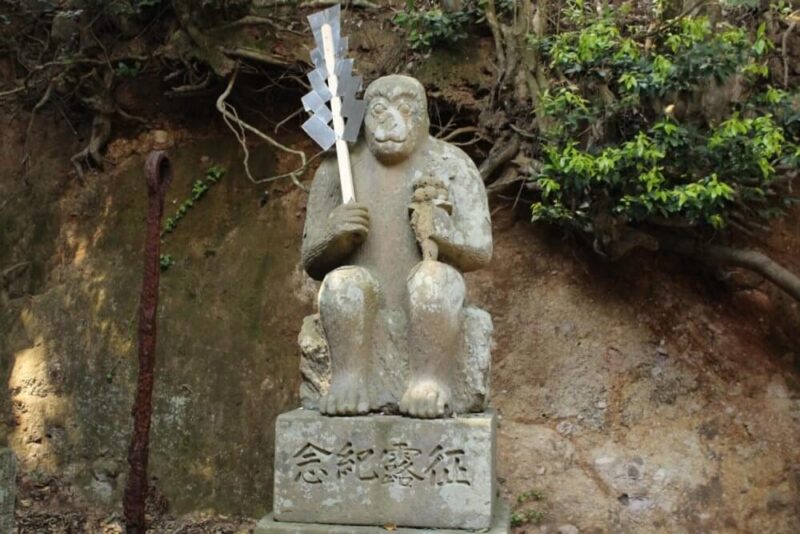
Monkey’s are said to do the work of the main god who lives at Hiyoshi Shrine

Looking down the main shrine continues the trend of intricate wood work
Temples Index
①Fukujyu-in Temple
②Ryugon-ji Temple
③Shotoku-in Temple
Fukujyu-in Temple
In Yuhigaura the Fukujyu-in Temple greets you with a colourful display of flowers, and some statues before you even pass the gate.
The giant carp flag is for children’s day which takes place on the May 5th. There were a few flying in Yuhigaura but its not such a common sight anymore.
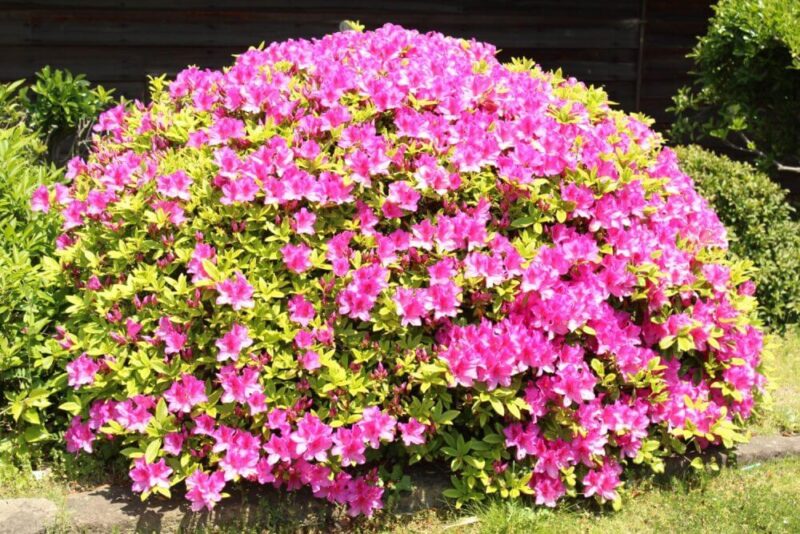
Some beautiful rhododendron flowers in bloom
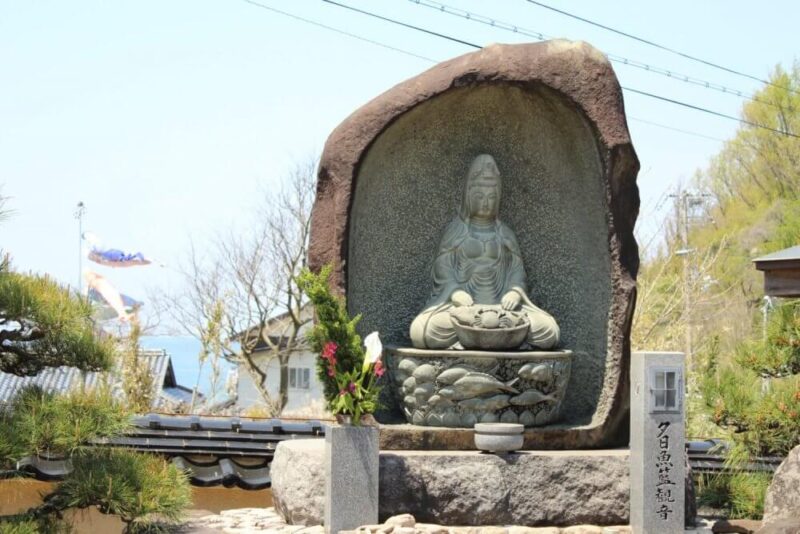
A statue outside the temple
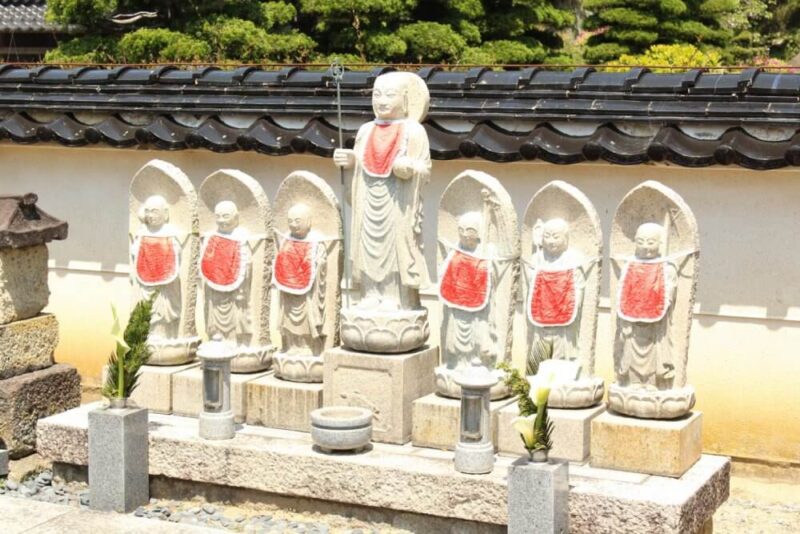
Some jizo statues
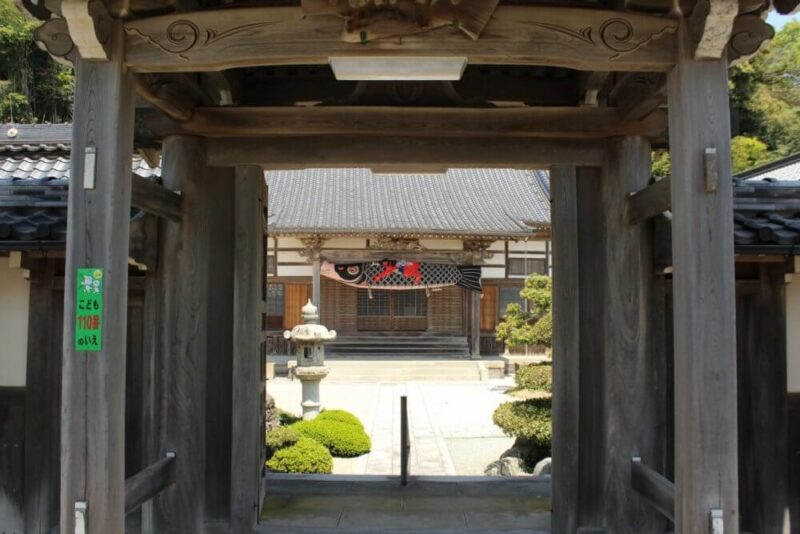
From the gate you can see the big carp flag set up.
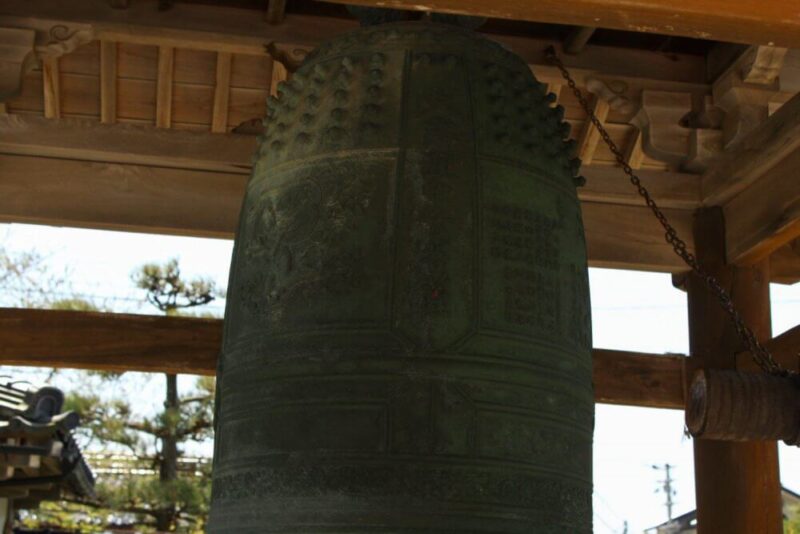
Even the giant bell has intricate details on it
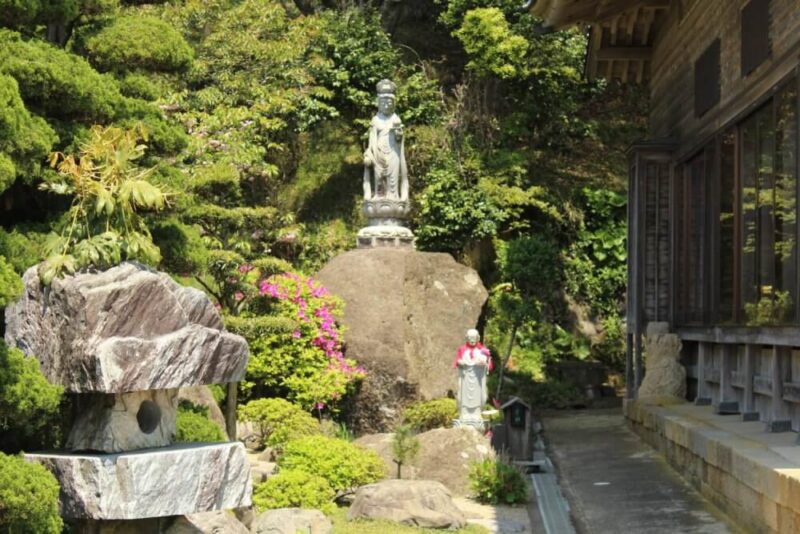
Some more statues around the side in a quite spot
Ryugon-ji Temple
Kibune Shrine might have had the most stairs of the shrines but Ryugon-ji might have the most overall.
Although, there is an access road and parking going up the hill, so you can bypass most of them.
The stairs are flanked by some very tall trees, making the approach very impressive. The temple holds zen meditation sessions twice a month.

The temple gate from the car park
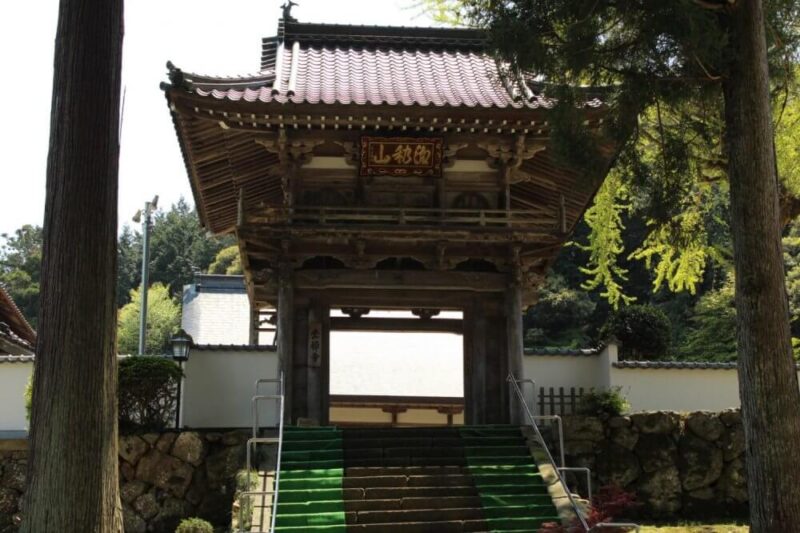
Close-up of the gate
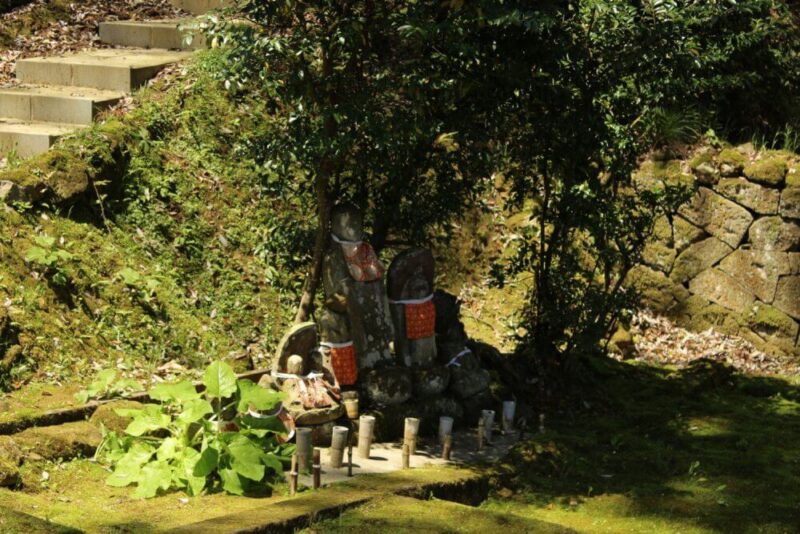
Some Jizo statues waiting outside
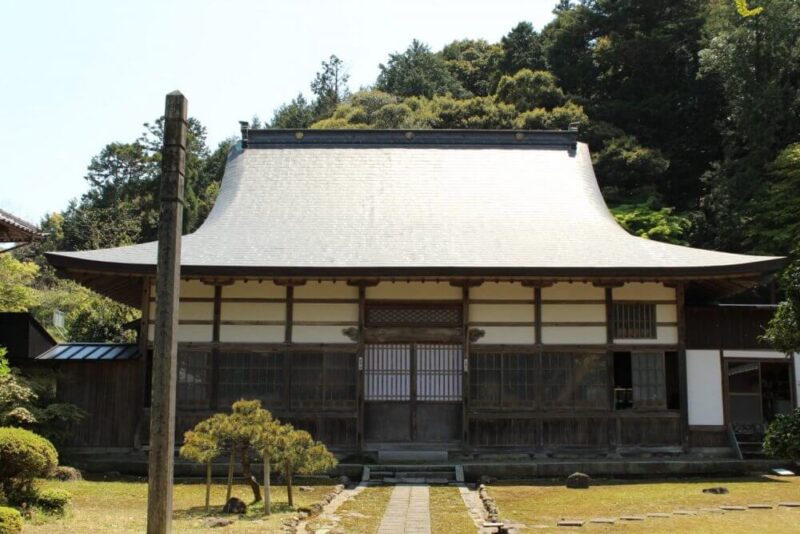
The main temple building
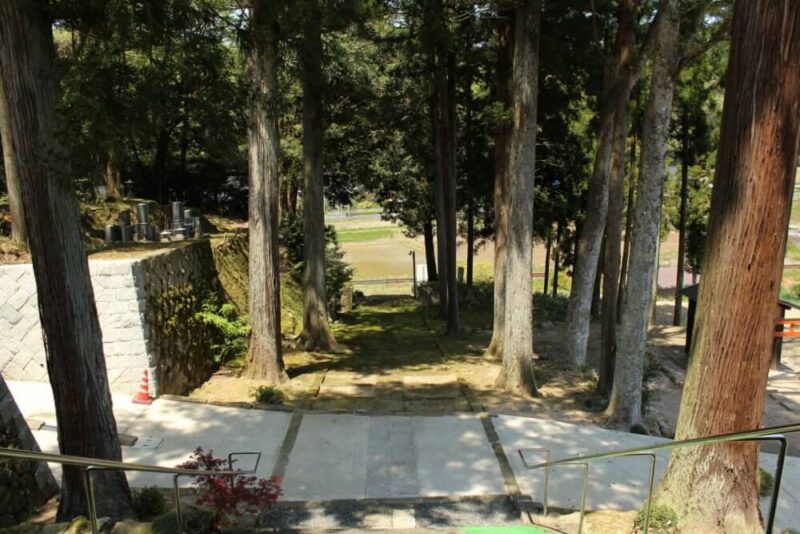
The view down the stairs surrounded by trees

It feels more peaceful and less imposing in person
Shotoku-In Temple
This temple is located right next to Hiyoshi Shrine along the Fukuda river.
It’s a fairly small temple, but the gate is quite impressive, and it does contain a lot of statues.
The three painted Jizo are said to be protectors of children and travelers, you can see them all over Japan. These ones are repainted by local children every year.
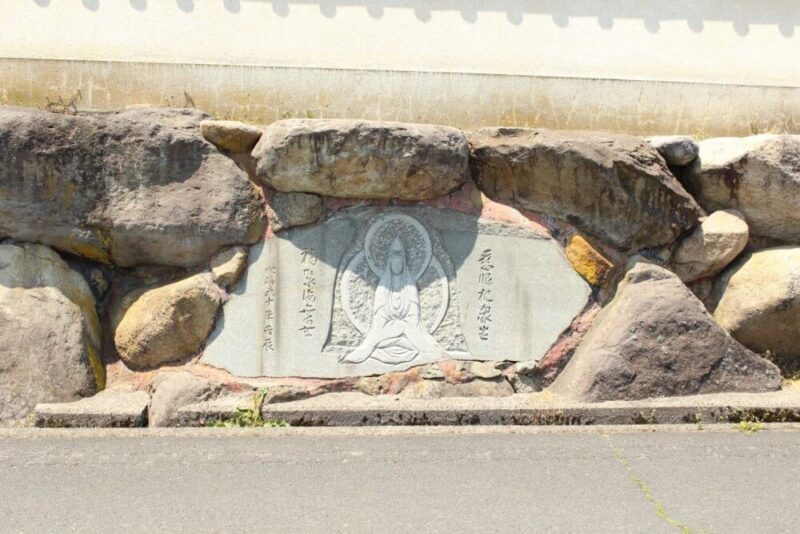
On the exterior wall of the temple

Many statues with the temple bell in the background
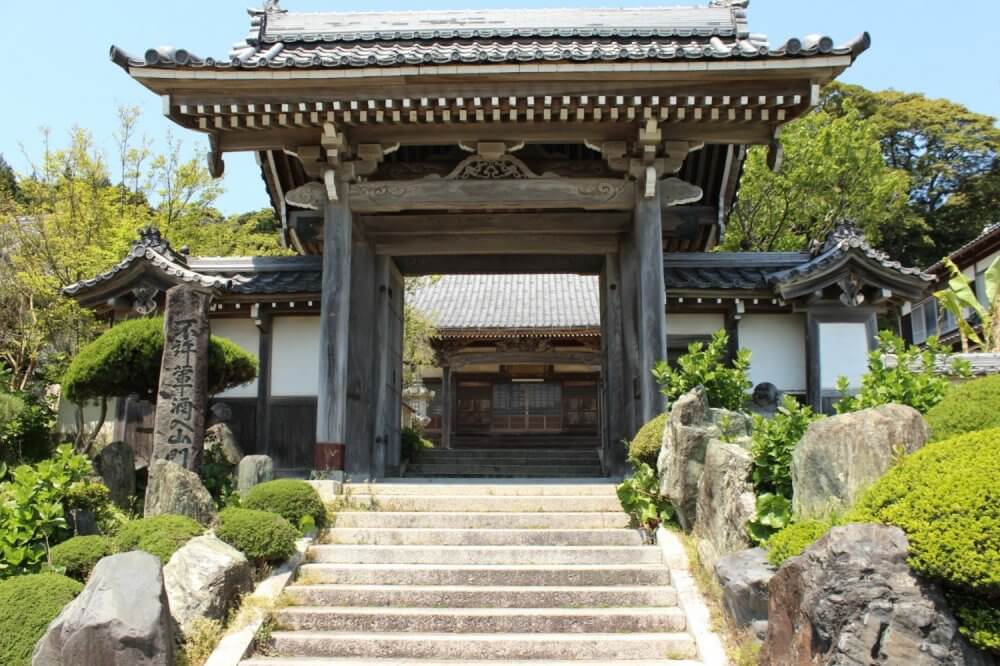
Looking up through the main gate
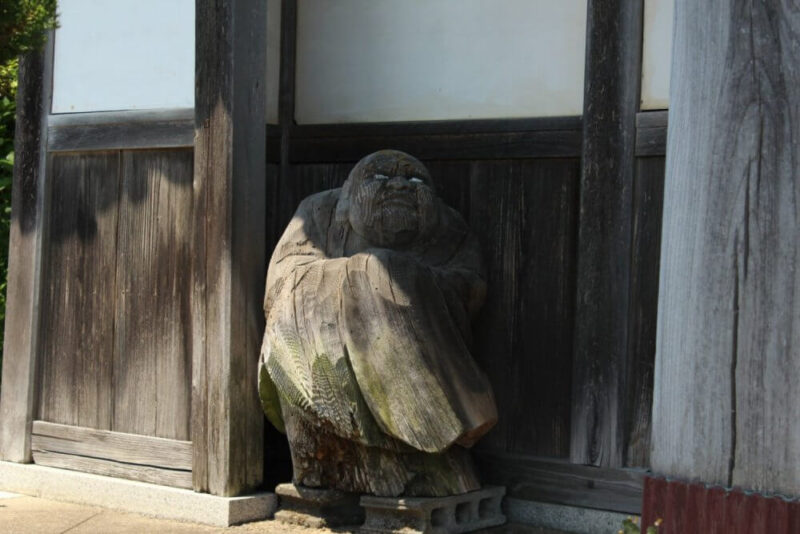
He seems a little suspicious
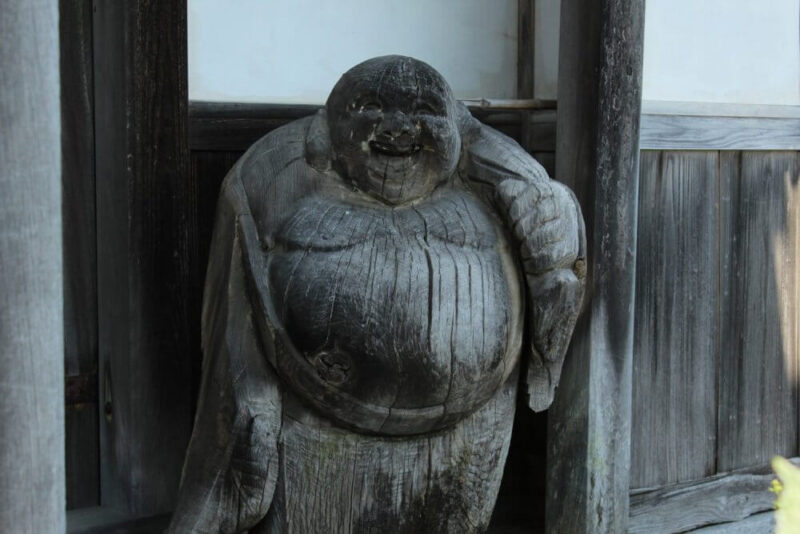
A more welcoming figure
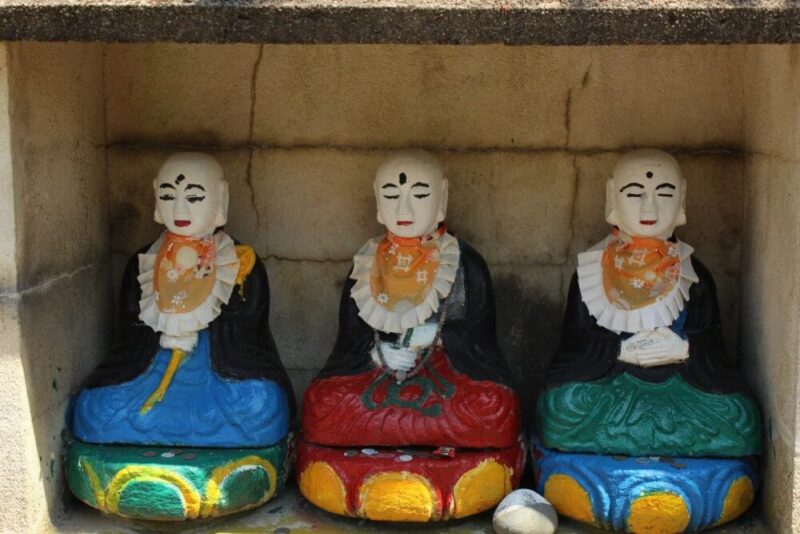
These Jizo are repainted by local children every year

Very intricate wooden dragon
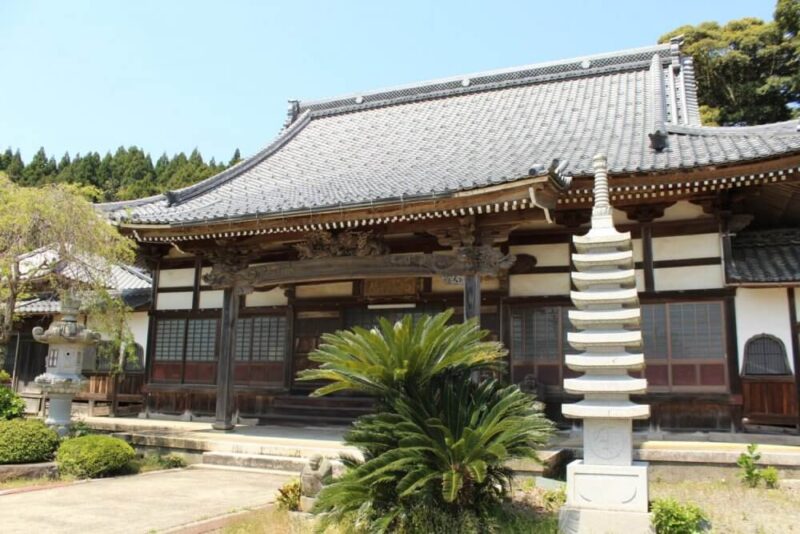
The main temple building
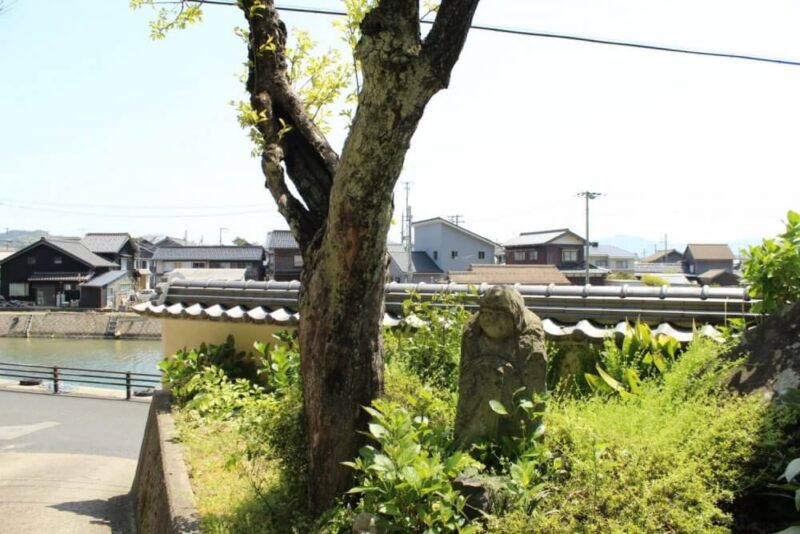
Another figure weary of visitors
Amino’s Shrines and Temples
I hope you’ve enjoyed this whistle stop tour of Amino’s shrines and temples.
There are still more to see, and a lot of other sites from around Kyotango to show. So keep an eye on this space.
